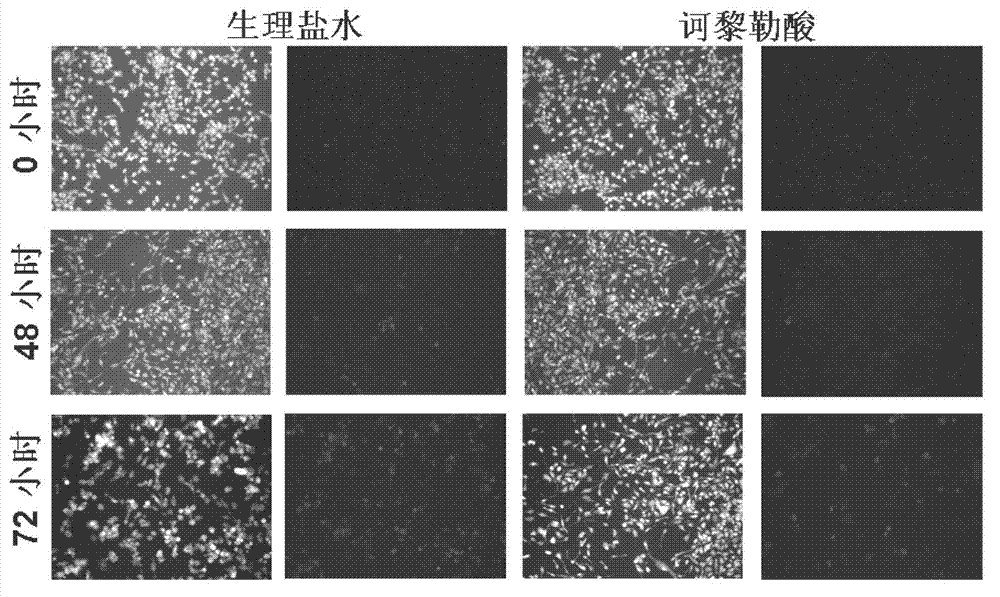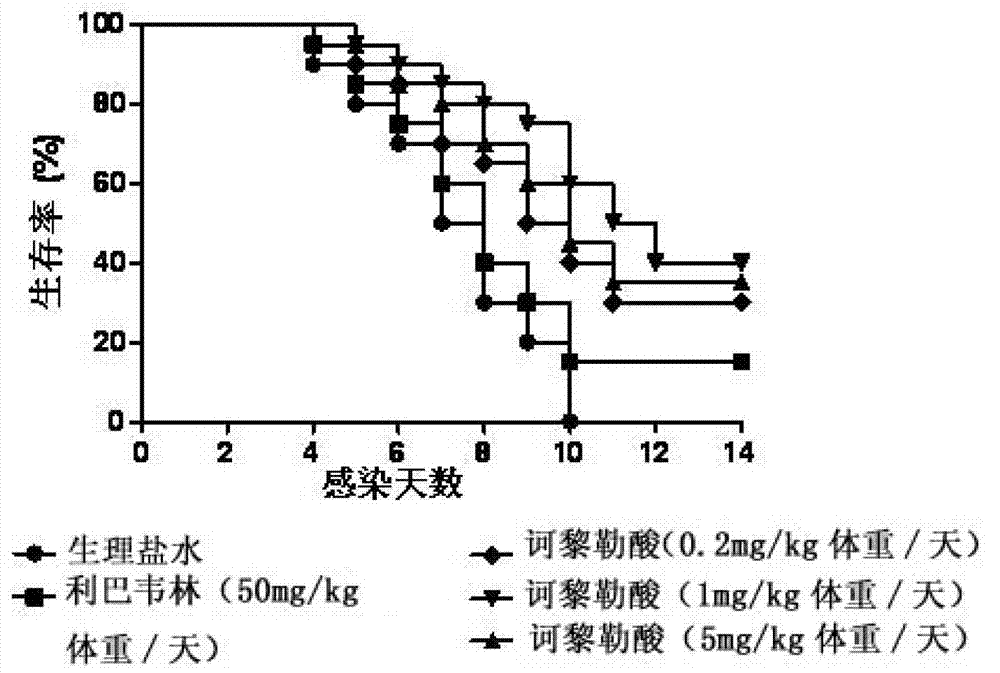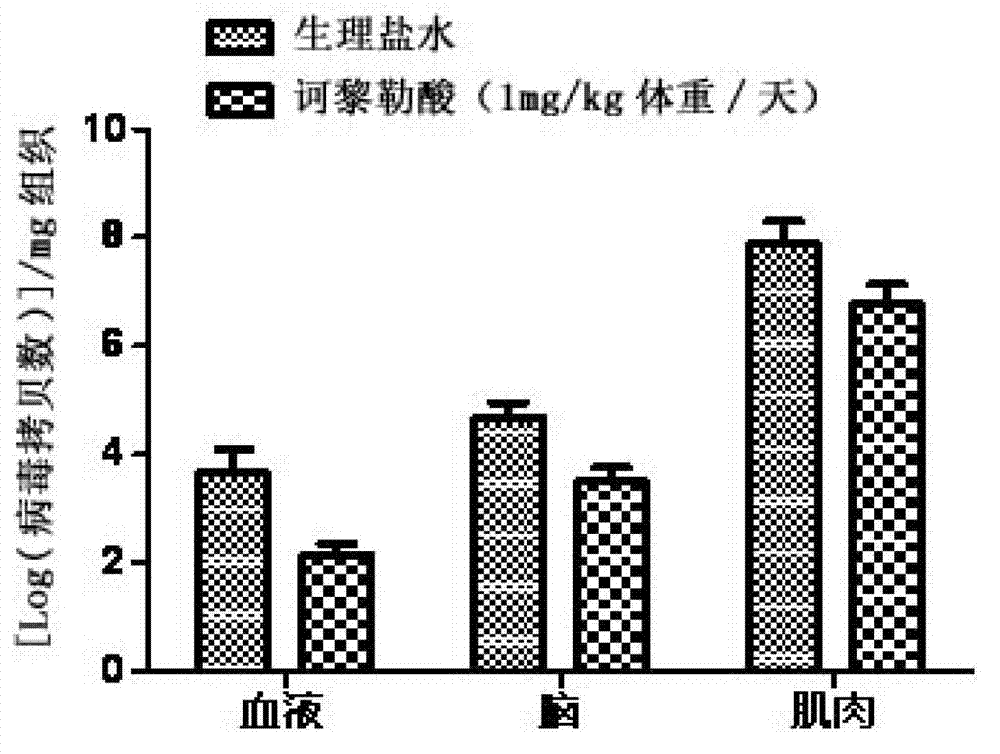Application of chebulagic acid in preparation of medicament for treating diseases resulted from human enterovirus type 71 infection
A technology of human enterovirus and salicylic acid, applied in the field of medicine, can solve the problem that EV71 infection has no recognized effective drugs or vaccines.
- Summary
- Abstract
- Description
- Claims
- Application Information
AI Technical Summary
Problems solved by technology
Method used
Image
Examples
Embodiment 1
[0020] Embodiment 1 challex acid inhibits the replication of EV71 virus in cells
[0021] In the EV71-infected human rhabdomyoma cell model, the newly cultured human rhabdomyoma cells were seeded into 96-well plates, and the number of cells per well was 2×10 4 indivual. After culturing in a 37°C incubator for 24 hours, the virus was inoculated.
[0022] The EV71 used is a popular strain in mainland China, the strain name is FY0805, isolated from Fuyang, Anhui, and the gene sequence is stored in NCBI as HQ882182. The dose of virus inoculated cells was 100TCID 50 , with a volume of 98 μl, and continue to culture in a 37°C incubator.
[0023] Challic acid was dissolved with normal saline, and administered 2 hours after the virus infected the cells, the drug volume was 2 microliters, and the untreated cells were given 2 microliters of normal saline. The cytopathic changes were observed within 72 hours, and the half effective inhibitory concentration of the drug was calculated ...
Embodiment 2
[0025] Therapeutic effect of embodiment 2 challex to EV71 virus infection mice
[0026] The purpose of this experiment is to verify the therapeutic effect of challex acid on EV71 virus infection in mice. The model used is a model of 10-day-old ICR mice infected with EV71 strain in mainland China. The strain is an adapted strain of the clinical isolate FY0805 in mice, the strain name is MP10, and the storage number of the gene sequence in NCBI is HQ712020. Take 1×10 7 TCID 50 After a dose of MP10 virus was injected intraperitoneally to infect 10-day-old ICR mice, the mice showed symptoms of hindlimb paralysis and weight loss within 4 days, and all died within 10 days after infection.
[0027] Using the above-mentioned model, the therapeutic effect of challeric acid was evaluated in vivo. The mice used were SPF grade ICR mice, 10 days old, half male and half male. First, intraperitoneal injection of MP10 virus for virus infection in mice, intraperitoneal injection of 2 hours...
Embodiment 3
[0029] Example 3 The effect of challelac on the viral load in EV71 virus infected mouse tissue
[0030] The viral load refers to the amount of virus per unit weight of the tissue, which is used to reflect the virus replication in the tissue.
[0031] The purpose of this experiment is to detect the effect of challeglic acid on the viral load in different tissues of EV71 virus-infected mice, so as to verify the inhibitory effect of challeglic acid on the replication of EV71 virus in vivo.
PUM
 Login to View More
Login to View More Abstract
Description
Claims
Application Information
 Login to View More
Login to View More - R&D
- Intellectual Property
- Life Sciences
- Materials
- Tech Scout
- Unparalleled Data Quality
- Higher Quality Content
- 60% Fewer Hallucinations
Browse by: Latest US Patents, China's latest patents, Technical Efficacy Thesaurus, Application Domain, Technology Topic, Popular Technical Reports.
© 2025 PatSnap. All rights reserved.Legal|Privacy policy|Modern Slavery Act Transparency Statement|Sitemap|About US| Contact US: help@patsnap.com



